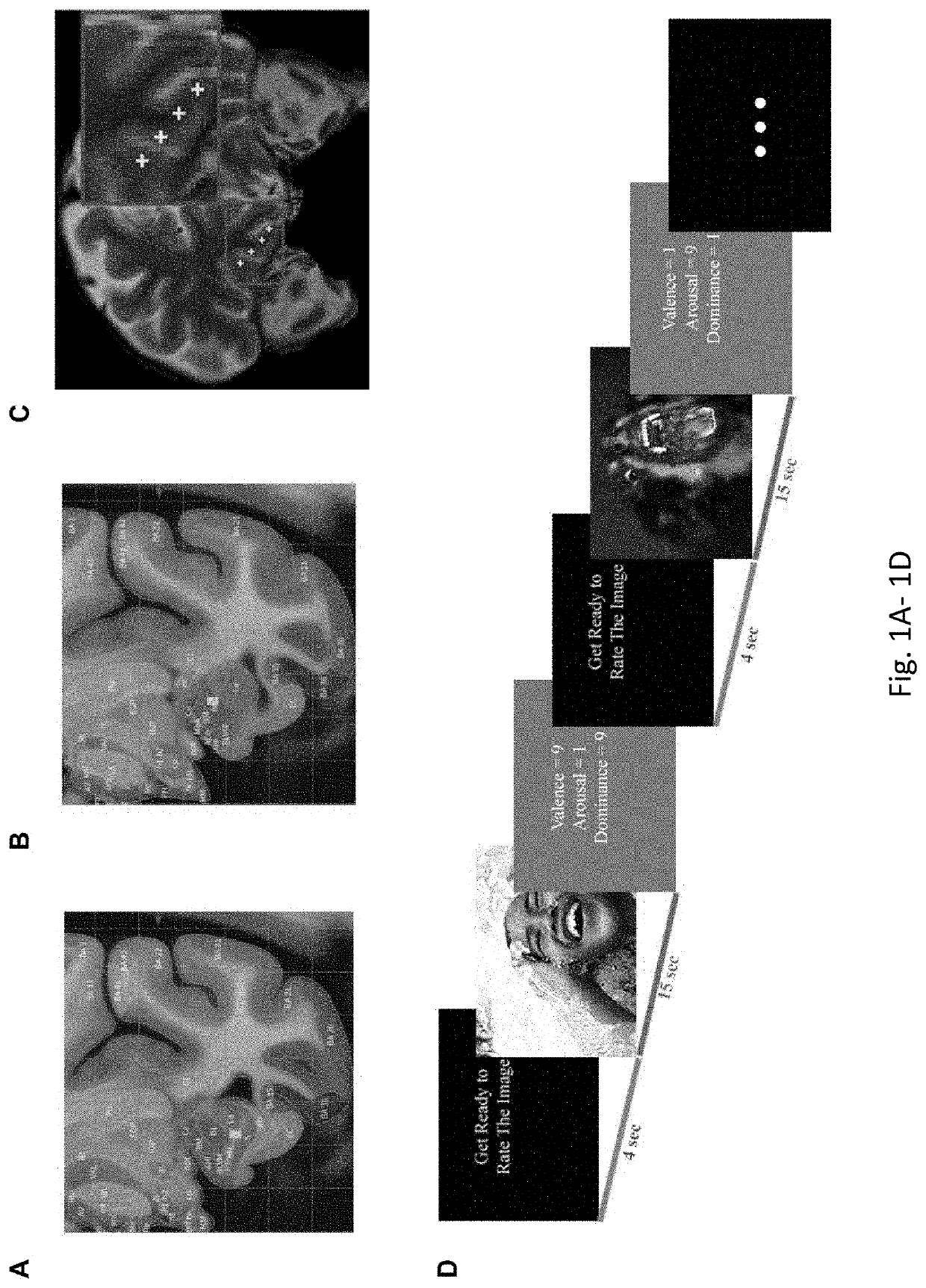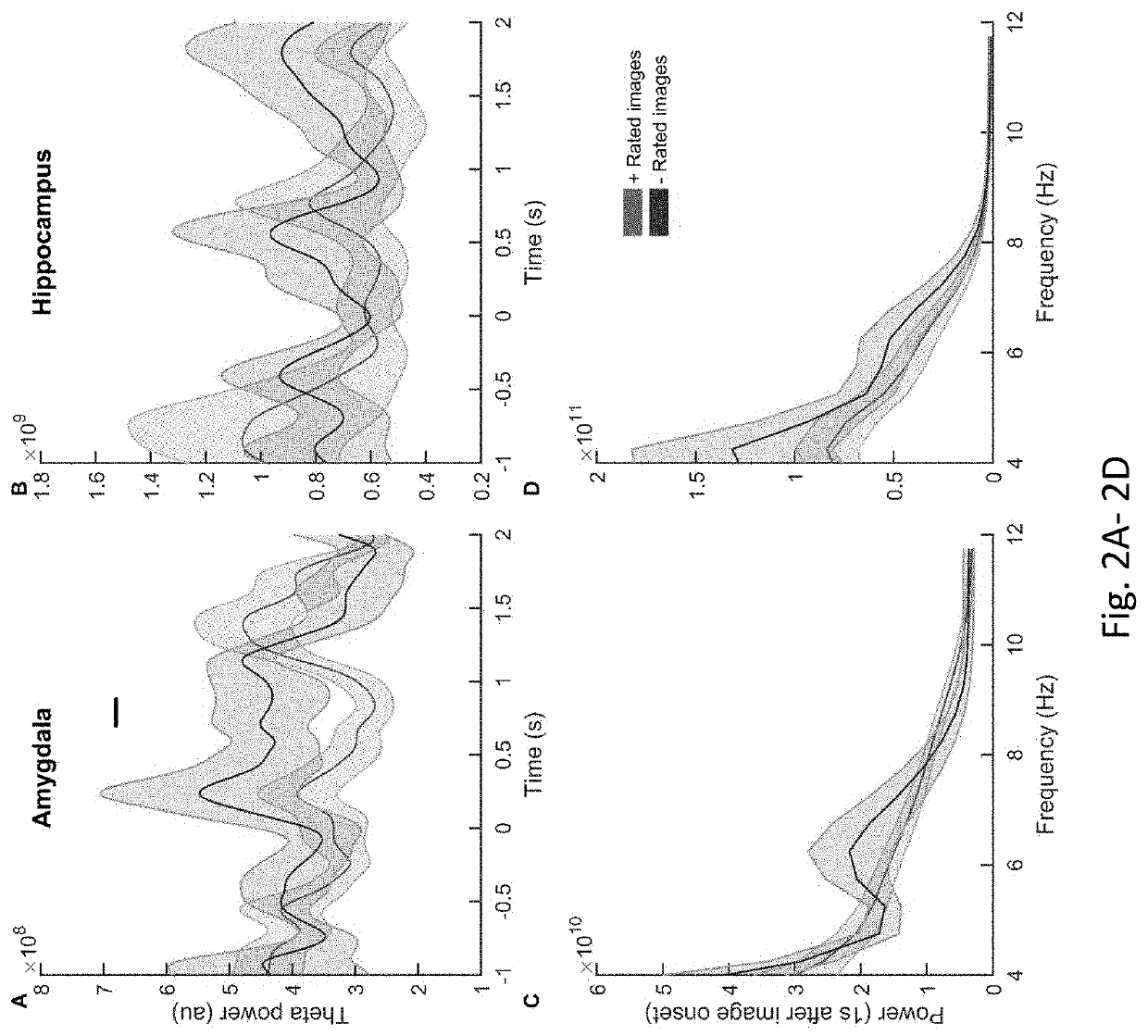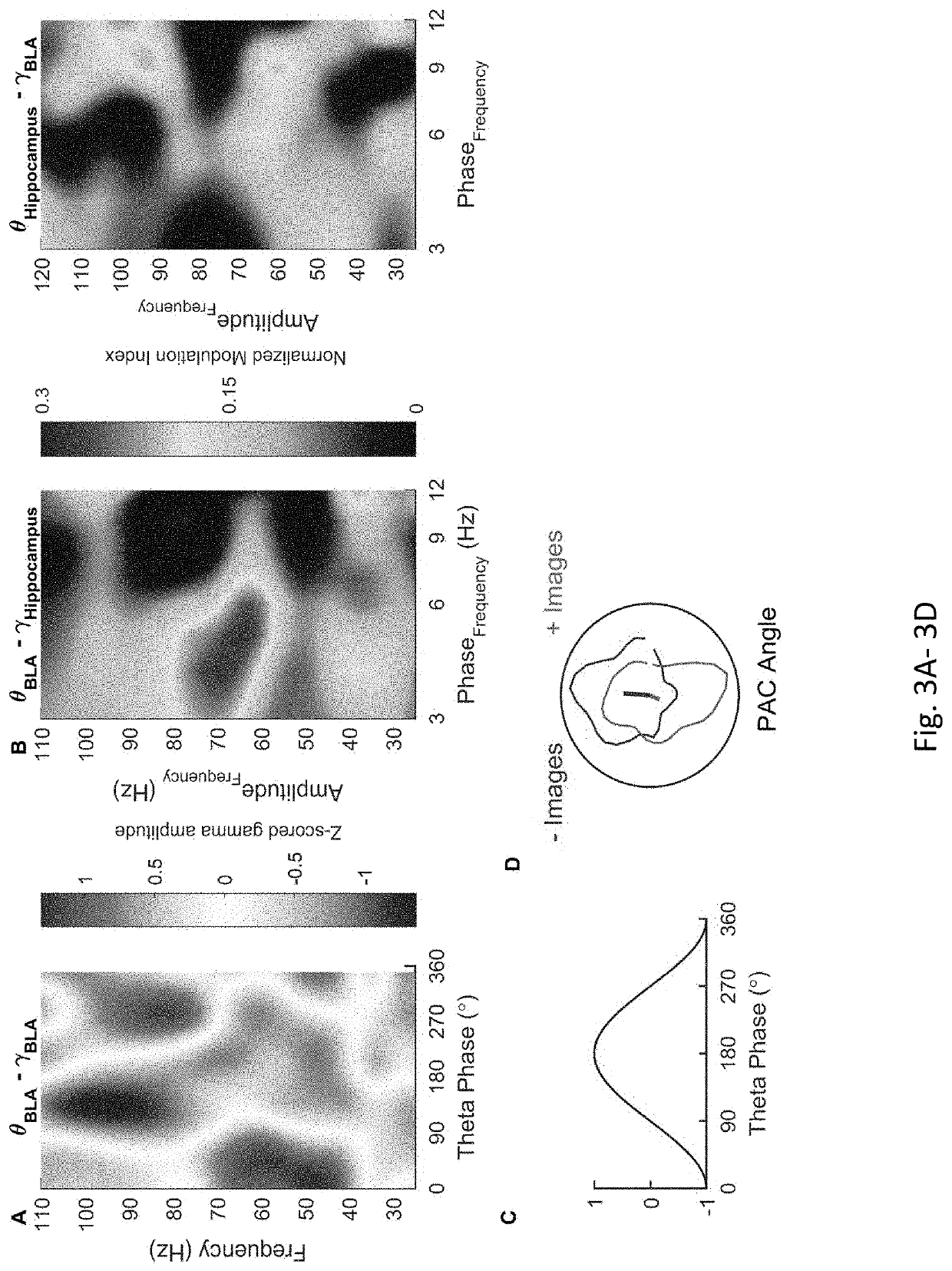Compositions and Methods for Treatment of Post-Traumatic Stress Disorder using Closed-Loop Neuromodulation
a neuromodulation and closed-loop technology, applied in the field of compositions and methods for treating post-traumatic stress disorder using closed-loop neuromodulation, can solve the problems of unknown exact neural mechanisms modulating the activity of fear and extinction in the bla of ptsd patients, and achieve the effect of increasing the bla theta power and increasing the bla gamma power
- Summary
- Abstract
- Description
- Claims
- Application Information
AI Technical Summary
Benefits of technology
Problems solved by technology
Method used
Image
Examples
experimental examples
[0098]The invention is further described in detail by reference to the following experimental examples. These examples are provided for purposes of illustration only, and are not intended to be limiting unless otherwise specified. Thus, the invention should in no way be construed as being limited to the following examples, but rather should be construed to encompass any and all variations which become evident as a result of the teaching provided herein.
[0099]Without further description, it is believed that one of ordinary skill in the art can, using the preceding description and the following illustrative examples, make and utilize the present invention and practice the claimed methods. The following working examples therefore are not to be construed as limiting in any way the remainder of the disclosure.
example 1
ial Neurophysiology of Hypervigilance in Posttraumatic Stress Disorder
[0100]Here, how oscillatory interactions in specific brain regions may coordinate enhanced fear and hypervigilance in PTSD is investigated. Local field potentials (LFP) were directly recorded from the BLA (FIG. 1A), anterior HPC (FIG. 1B), and OFC (FIG. 1C) in a patient with PTSD. Without being bound by theory, it was hypothesized that: (i) there is an increase in the BLA theta power following the presentation of a negative compared to positive / neutral stimuli, (ii) there is enhanced coupling between BLA gamma amplitude to particular phases of BLA theta oscillations following the presentation of a negative stimuli, and (iii) there is increased coupling between hippocampal gamma activity to a particular phase of BLA theta oscillations following the presentation of negative stimuli.
[0101]In order to examine these, the effects of positive / neutral and aversive images on BLA, HPC, and OFC LFP activity were examined in ...
example 2
atterns of Theta Power in PTSD and GAD but not in Epilepsy
[0124]The results from Example 1, higher theta power in the right BLA after negative images, were replicated in a participant diagnosed with severe GAD. However, in a participant with epilepsy (who did not suffer from PTSD or GAD), no significant differences were observed in the BLA theta power after the negative versus positive / neutral stimuli (FIG. 5).
[0125]The nature of theta-gamma coupling was explored within the BLA by computing the phase-amplitude co-modulogram. The data (FIG. 6) suggests that low and high gamma oscillations are locked to different phases of theta for negative stimuli.
[0126]The results suggest that the activity of the right BLA—in particular the pattern of theta oscillations—after aversive stimuli may be unique and perhaps triggered at a lower threshold in disorders such as PTSD or GAD such that it is conducive to the coordination of an enhanced fear and a hypervigilant state.
[0127]BLA theta also signif...
PUM
 Login to View More
Login to View More Abstract
Description
Claims
Application Information
 Login to View More
Login to View More - R&D
- Intellectual Property
- Life Sciences
- Materials
- Tech Scout
- Unparalleled Data Quality
- Higher Quality Content
- 60% Fewer Hallucinations
Browse by: Latest US Patents, China's latest patents, Technical Efficacy Thesaurus, Application Domain, Technology Topic, Popular Technical Reports.
© 2025 PatSnap. All rights reserved.Legal|Privacy policy|Modern Slavery Act Transparency Statement|Sitemap|About US| Contact US: help@patsnap.com



